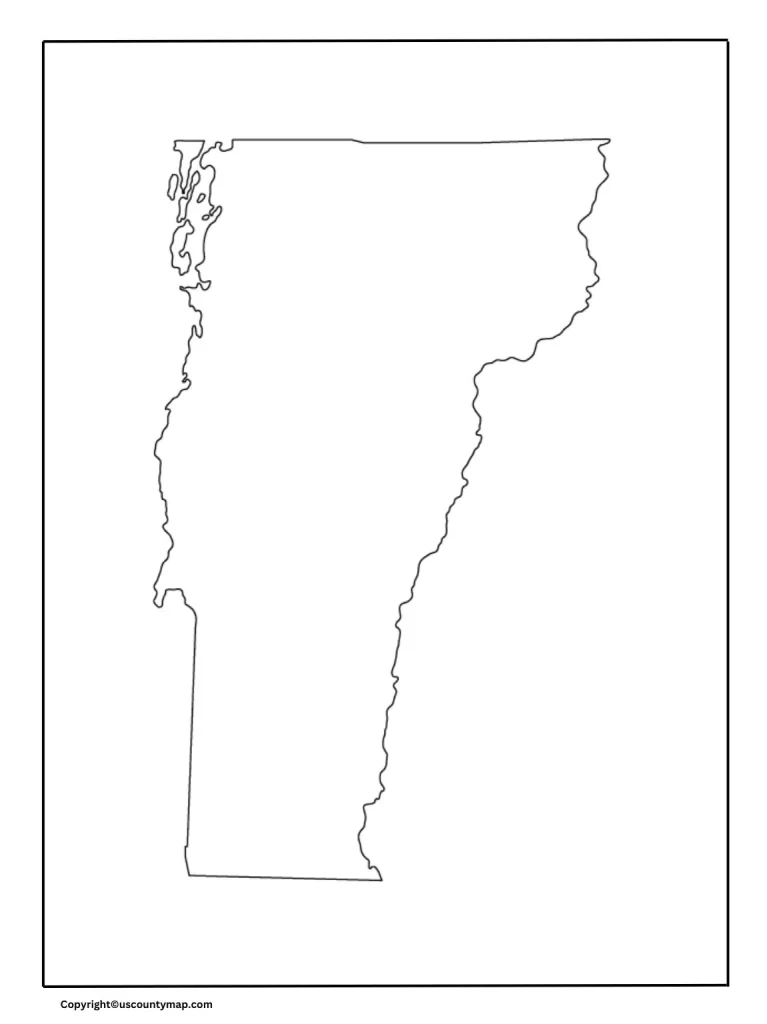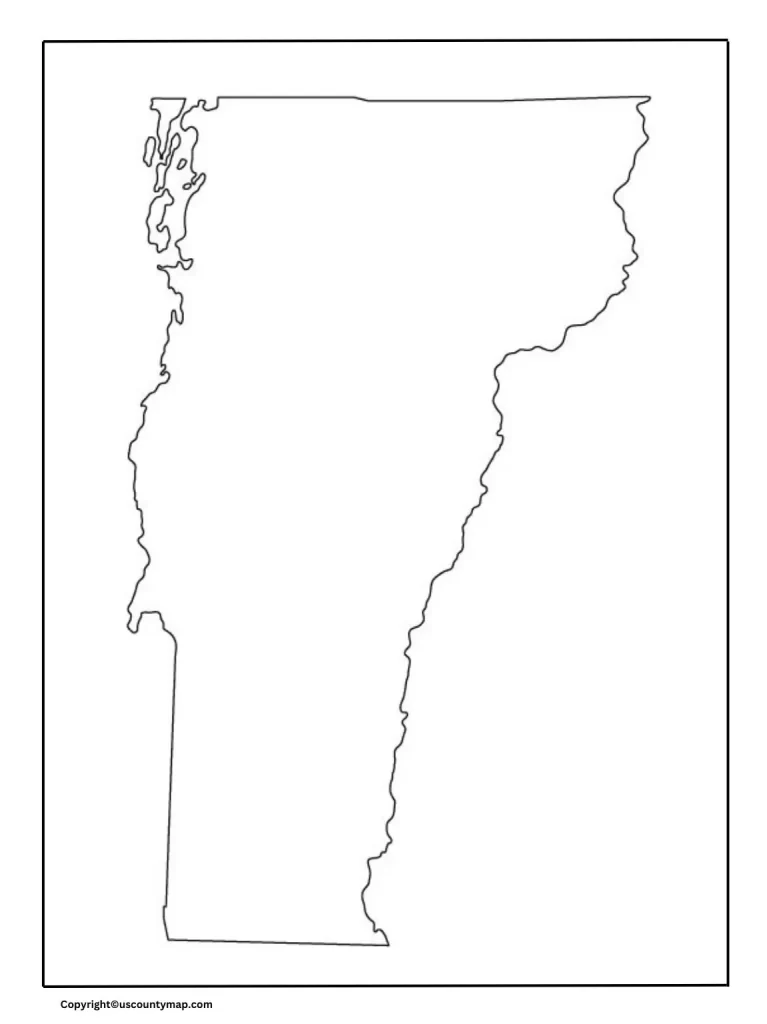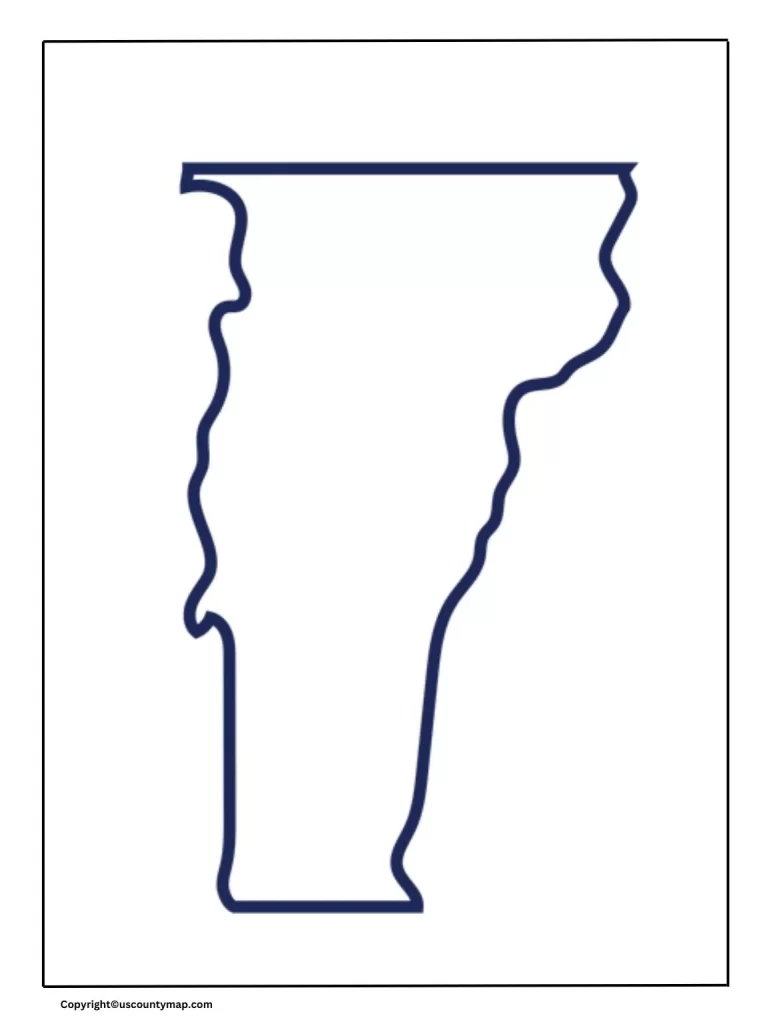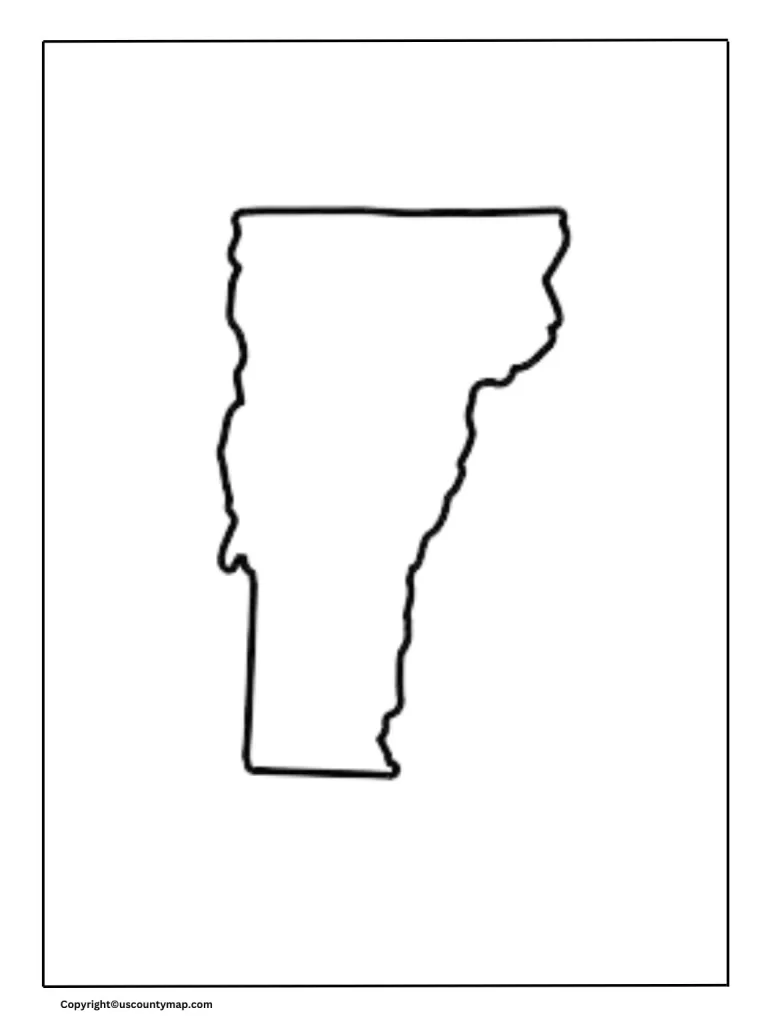Blank Map of Vermont – Vermont, located in the north eastern part of the United States, is famous for its scenic beauty, splendorous autumn colors, and close-knit communities. It is in the New England region, sharing its borders with Massachusetts to its south, New Hampshire to its east, New York to its west, and the Canadian province of Quebec to its north. Its capital is Montpelier and its largest city is Burlington.
Blank Map of Vermont

Geography and Natural Features:
Vermont has its geography diversely marked, from the north to south lying Green Mountains with the best prospects of outdoor adventures including hiking, skiing, and snowboarding. Vermont’s highest mountain is Mount Mansfield. There is fertile land to the west, adjacent to Lake Champlain, which is a notable water body giving leisure activities as well as means of transportation. Vermont is also prolific in rivers, with the Connecticut River shaping much of its eastern border.
Climate:
Vermont has a humid continental climate with cold, snowy winters and hot, humid summers. The state is renowned for its beautiful fall colors, which bring in visitors from all over the country to see the kaleidoscope of colors.
History:
Vermont’s past is unusual in that it was a republic in its own right from 1777 until 1791 before becoming part of the United States as the 14th state. Vermont has a long tradition of independence and progressive politics, being the first state to end slavery and the first state to give presidential candidate Bernie Sanders, a progressive, statehood.
Printable Map of Vermont
Economy:
Vermont’s economy is varied, with major contributions from agriculture, manufacturing, and tourism.
- Agriculture: Famous for its dairy farms, Vermont is a major producer of dairy products, especially artisanal cheeses. Production of maple syrup is also a major industry, with Vermont producing more maple syrup than any other state.
- Manufacturing: There is a robust production quarter within the state, which include production electronics, machinery, and meals. Local example of the producing achievement, along with the birthplace for Ben
- Tourism: Vermont’s natural scenery and recreational outdoor opportunities make tourism an essential component of the economy. Ski resorts, hiking trails, and state parks attract visitors throughout the year.
Vermont Map Outline
Culture and Attractions:
Vermont has a vibrant cultural life with emphasis on community and stability. Vermont is famous for its festivals, local crafts and artisans food and drinks. The state’s cultural center Berlington has a series of music festivals, art galleries and cinemas. There are also many historical sites in Vermont, such as the Shellburn Museum and Bennington Battle Memorial.
Importance of a Vermont Map:
An empty map of Vermont is an essential tool for various uses:
- Education: In schools, Maps help students learn about the major places of geography, history and vermont. They can be used in schools to teach state geography, demographic analysis and historical events.
- Travel and Tourism: For tourists and travelers, a map is necessary to search for beautiful roads of Vermont, find attractions and organize trips. It helps in detecting tourist attractions such as ski resorts, hiking trails and historical sites.
- Real Estate and Urban Planning: Urban planners and real estate professionals used maps to mark property limitations, design development and study population trends. All this helps in making sound property investment decisions and urban planning decisions.
- Business Planning: Companies can use maps to study market areas, select areas to open new stores, and design distribution routes. This geographical mapping is important for running effective business and help in development.
- Government and public services: Maps are used by government agencies to plan public services, infrastructure and emergency response. Maps assist in imagining service sectors, road network schemes and natural resource management.
- Environmental Studies: Researchers and environmentalists use maps to analyze the areas of natural resources, wildlife houses and conservation of Vermont. This conservation helps in planning strategies and managing natural resources in a permanent way.
- Information and personal research: People conducting family history or personal research appoint maps to find ancestral homes, follow migration routes and examine historical places related to their offspring.
Vermont Map Worksheet [Blank Map of Vermont]
Vermont is a nature-rich state, an economically diversified state, and highly community-minded. Its exceptional geography, history, and culture have made Vermont a very intriguing location to research and visit. An in-depth map of Vermont is an informative asset in different areas, revealing pertinent information necessary for education, traveling, doing business, the government, environment research, and private research. Whether driving the scenic routes, charting a new enterprise, or mapping family heritage, a Vermont map is an instrument of discovery about and a promoter of appreciation for everything that the state has to offer.



